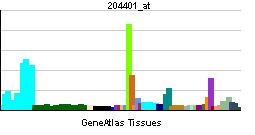Entrez 3783 | Ensembl ENSG00000104783 | |
 | ||
Aliases KCNN4, IK1, IKCA1, KCA4, KCa3.1, SK4, hIKCa1, hKCa4, hSK4, IK, DHS2, potassium calcium-activated channel subfamily N member 4 External IDs MGI: 1277957 HomoloGene: 1696 GeneCards: KCNN4 | ||
Potassium intermediate/small conductance calcium-activated channel, subfamily N, member 4, also known as KCNN4, is a human gene encoding the KCa3.1 protein.
Contents
Function
The KCa3.1 protein is part of a potentially heterotetrameric voltage-independent potassium channel that is activated by intracellular calcium. Activation is followed by membrane hyperpolarization, which promotes calcium influx. The encoded protein may be part of the predominant calcium-activated potassium channel in T-lymphocytes. This gene is similar to other KCNN family potassium channel genes, but it differs enough to possibly be considered as part of a new subfamily.
History
The channel activity was first described in 1958 by György Gárdos in human erythrocytes. The channels is also named Gardos channel because of its discoverer.
